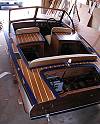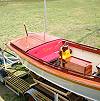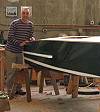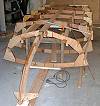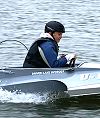

A place to share YOUR boat building story
Glen-L Marine Designs - 9152 Rosecrans Ave. - Bellflower, CA 90706
 In this issue
In this issue
-
Independence Day
-
Two to Nashville by Ray
Macke
-
Boatbuilder of the
Month
-
Designer's Notebook: So You
Want to be a Boat Designer?
-
Boat Plans by ArtDeco
-
Photos sent in since the last
WebLetter...
-
Seasick Solutions by David
G. Brown
-
Shop Talk: Is it Time to Get a
Fresh Edge? by Steve Scott
-
Recent email
-
eMail of the
Month
GLEN-L Update
- We at Glen-L are looking forward to the 4th of July when we'll get togther with family and friends for some good times, and to spend a little time reflecting on how blessed we are to live in the greatest country on God's green earth.
- We hope that you, too, will celebrate our independence, and say a prayer for all of our Soldiers, Sailors, Airmen, Marines and Coastguardsmen who are serving and sacrificing in order to keep us safe here at home. Whether or not you agree with their current mission, I'm sure that you'll join us at Glen-L in praying for their safety and provision, and the successful completion of their mission so that their return home will be sooner rather than later.
- What a country! - God Bless America!
Until next month . . .
Editor

* Independence Day July 4th *
O n July 4, 1776, we claimed our
independence from Britain and Democracy was born. Every day
thousands leave their homeland to come to the "land of
the free and the home of the brave" so they can begin
their American Dream.
The United States is truly a diverse nation made up of
dynamic people. Each year on July 4, Americans celebrate that
freedom and independence with boating, barbecues, picnics,
and family gatherings. Through the Internet we are learning
about and communicating with people of different nations,
with different languages and different races throughout the
world. Bringing the world closer with understanding and
knowledge can only benefit all nations.
We invite all nations to celebrate with Americans on this
Fourth of July.
Happy Birthday, America!
Two to Nashville
Lake Barkley and the Cumberland
River
by Ray Macke
It was a beautiful spring evening
on the Nashville municipal boat dock. The sun had set a few
hours earlier and we had just returned from a stroll across
the Shelby Street Bridge. The bridge overlooks the downtown
area as well as the dock and offers an exceptional view of
the city lights at night.
 Returning to Therapy we settled
into our lawn chairs planning to sit on the dock and watch a
movie on the DVD player. I noticed the piercing spotlight of
a tow making its way up the narrow stream towards us, knowing
it would be passing in a few minutes. Our backs were to the
bridge when we suddenly heard a loud splash.
Returning to Therapy we settled
into our lawn chairs planning to sit on the dock and watch a
movie on the DVD player. I noticed the piercing spotlight of
a tow making its way up the narrow stream towards us, knowing
it would be passing in a few minutes. Our backs were to the
bridge when we suddenly heard a loud splash.
My first though was, “What did they throw off the
bridge?” It had sort of a pop like a wide piece of wood
hitting the water. We turned to look as the splash was
subsiding and after a few seconds something slowly bobbed to
the surface. It took a moment but then I realized it was a
person. We had a jumper! I quickly looked downstream and the
barge is still coming. “This is going to be
interesting,” I thought.
Editor's Note: Therapy is Ray Macke's Cabin Skiff. For more of
his adventures, see the WebLetter Index of Articles under Cabin Skiff.
Boatbuilder of the Month
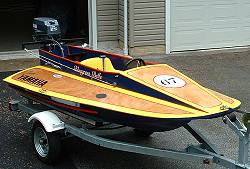
Gene Hall - Tunnel Mite
Gene's Story . . .
I have recently finished the Tunnel Mite. Started in Sept. '07, I am proud to say my Tunnel Mite is ready for sea trials. Just had it titled and registered (a word to the wise, keep ALL receipts, you'll need them for that purpose). Glen-L was kind enough to send me a copy of all my receipts that I have used with them in purchasing material.The building process went pretty straight forward, with the usual speed bumps to overcome, but all in all it went well. I am very pleased with the way it turned out, considering this is my first boat building project. That being said I flipped the boat over (after having the bottom completely done), and dove in on the topsides. Making templates for the combing and decking, it wasn't long before I had them on - fastening the decking to the combing sides proved to be a little tricky. I used both screws and nails; in the process, I found using the screws proved to be a little easier than hammering the nails in.
Anyway it all went well. I (as others have done) have raised the dashboard 3 inches; gives you a little more room and looks better asceticaly. Added some additional bracing to the transom (since I plan on using a 25 hp motor ) giving me a little more peace of mind. I painted the boat in yellow, red and blue and added some graphics(hoping it would look more like an older vintage Hydro), and am happy with the results. I have since added a new 25 hp Yamaha, which weighs in at about 110 pounds, and a new trailer adapted to fit the Tunnel Mite (not as hard as I had thought).
Next step - FULL THROTTLE!
Things I have learned:
- You can fall off a 3' stepladder just as easy as an 8 footer.
- (More often than not) paint thinner is flammable.
- Anything that has "stainless" written on it is expensive.
- Building a boat is a great experience!
Sea trails are to begin around May 30th. I am open to discussing the building with anyone starting this project.
Middle River, MD
Editor's Note: See the complete story of
Gene Hall's Tunnel Mite build and more photos here.
Designer's Notebook: So You Want to be a Boat Designer?
S o you want to get into
the boat design business. You work in a clean
environment; you do what you want to do (hopefully)
more than anything else and you can make scads(?) of
money. Sounds like a dream made possible if it were
true. |

Boat PlansI believe most new builders experience some trepidation when they get a look at the boat plans they ordered. Up to that point it's wishes and fantasies; after that it's all about commitment. It is all too easy to set the plans aside and wait for the "right" time. But that won't get you on the water in your own boat. I have had those feelings too, so I wrote this poem to hopefully encourage a new builder to take that first construction step.
T he boat plans that I
ordered -ArtDeco |
Photos sent in since the last WebLetter... |
Seasick Solutions
So you've tried everything to prevent your little water warrior's face from turning green? Maybe these simple answers will do the trick.
by David G. Brown
Q: My kids love to get out on the
water, but one always becomes seasick. We've tried almost
everything. Any suggestions?
A: The only sure cure is to sit
under an oak tree. However, it's not practical to carry
an oak tree to sea. During my 15 years of running a sailboat
race committee boat, I had a different "crew" every
race. We would sit anchored until the last boat finished,
sometimes hours after the first-place boat. Naturally, I
gathered a lot of experience with seasickness and learned
some "tricks" to reduce problems.
Don't go out with an empty stomach. Hunger tends to feed
that queasy feeling. Avoid a greasy breakfast; skip the
corned beef hash in favor of pancakes or waffles. While
underway, have snacks available. Bland, salty pretzels work
best, because they help settle the stomach and stay crisp in
the moist atmosphere. Chips work, but can go stale too
quickly. Peanuts and trail mixes are also good choices.
For good-tasting medicine, take along some of Grandma's
old-fashioned ginger snaps. Homemade cookies baked with real
ginger are the best snack of all. Ginger root has a
demonstrated ability to calm queasy digestive systems. If you
don't want to bake ginger snaps, look for anti-nausea
pills and chewing gums containing ginger root or ginger
oil.
Encourage potential victims to drink water to prevent
dehydration. Soda pop settles some stomachs, but distresses
others. If the victim wants a fizzy drink, consider
Vernor's brand ginger ale. For some reason it seems to
work better than ginger ales intended for primary use as a
bar mix.
There are anti-seasickness pills, like Dramamine or Bonine,
available. These must be taken before going on the water so
they have time to take effect before feeling nauseous.
Beware: Most people do get drowsy when they take these pills.
MotionEaze is a natural formula applied behind each ear.
It's said to be effective even after the onset of
seasickness.
Wristbands work by applying pressure to a specific point on
the arm near the wrist. They're claimed safe for children
and have no drug side effects. Simple bands cost under $10
and are reusable.
Assign a member of the crew to keep watch over anyone
who's known to get seasick. The first symptom will be
listlessness. The victim will withdraw from conversations, so
act now or get the bucket later. Victims should be encouraged
to sit out in fresh air where they can see the horizon. Keep
them chatting, and never allow victims to stare down into the
boat.
 "Obstacles are those frightful things you see when you take your eyes off your goal." -- Henry Ford, founder of the Ford Motor Company |
Shop Talk: Is it Time to Get a Fresh Edge?
SIGNS THAT YOUR TOOLS ARE LOSING THEIR CUTTING POWER
by Steve Scott
Beginning boatbuilders are told
often about the importance of keeping tools sharp. Deciding
when to stop and resharpen or replace a tool ultimately
depends on how much poor performance you’re willing to
accept. Applying that lesson, however, takes practice. For
starters, how can you tell when a tool is losing its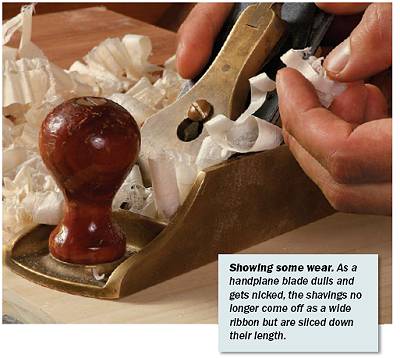 edge?
edge?
Christian Becksvoort calls the descent from sharp to dull
“a gentle, downward curve, with steadily declining
results and ever more effort required.” Is it time to
get a fresh edge?
We asked Becksvoort and others to describe some indicators
that it is time to sharpen. the three warning signs: effort,
results, and tool condition.
How hard are you working?
When deciding whether a tool is losing its edge, “my
first clue is an increase in cutting resistance,” says
Garrett Hack.
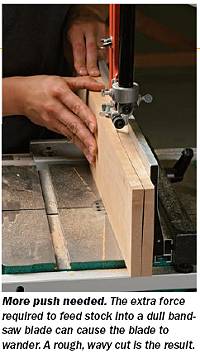 Simply put, a dull cutting edge on a hand or
power tool requires more force to cut the wood. On router
tables, for instance, a dull bit means you’ll have to
exert more pressure to keep the wood against the fence.
Simply put, a dull cutting edge on a hand or
power tool requires more force to cut the wood. On router
tables, for instance, a dull bit means you’ll have to
exert more pressure to keep the wood against the fence.
“A dull bit will tend to push the material
away,” Roland Johnson says. “A sharp bit just
cuts.” In similar fashion, a dull jointer knife wants
to lift a board off the table.
You’ll have to push harder to move stock through a cut
if a bandsaw or tablesaw blade is dull. A dull tablesaw blade
requires extra effort even if cleaned of gum and pitch,
Becksvoort says.
On the bandsaw, you’ll find yourself pushing the blade
against the rear thrust bearing as you force stock through a
cut, according to Gary Rogowski. this is more apparent with
thicker stock.
With handplanes, Hack says, a dull edge is most noticeable
on end grain. And dull chisels are harder to handle.
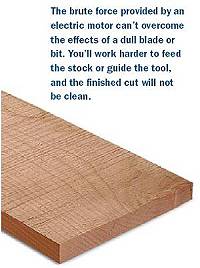 “On long grain I have to push
harder,” says Hack, “and I sometimes lose control
because the dull edge wants to dive into the fibers rather
than sever them.”
“On long grain I have to push
harder,” says Hack, “and I sometimes lose control
because the dull edge wants to dive into the fibers rather
than sever them.”
Becksvoort sharpens his chisels after one large section of
work or two or three smaller pieces.
What do the results look like?
If increased effort is the first sign of a dulled edge, poor
results are the surest.
Jointers and planers will leave tearout when blades are
dull. Becksvoort changes them after two to four months of
frequent use. the dulled blades give the wood a polished
appearance that is “very shiny, but not particularly
smooth.”
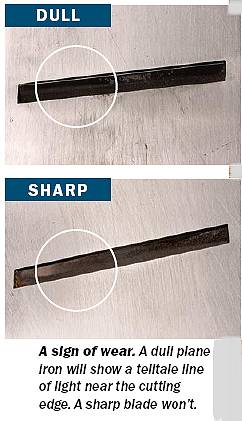
A router with a dull bit can burn the stock, but that also
can happen with a slow feed rate. A surer sign, Hack notes,
is a cut with feathery or splintered edges.
On the bandsaw, Rogowski says, a dull blade will wander and
yield a wavy cut, or begin to drift increasingly to one
side.
With chisels, Becksvoort finds that when chopping slots,
“I begin to get an unacceptable amount of tearing as I
chop down across the grain.”
Hack gauges the sharpness of a handplane edge “by
looking at the shaving and by feeling the surface.” On
long grain, he looks for tearout and a dull or slightly rough
surface. “the shavings no longer come off as a
continuous thin ribbon but are getting sliced down their
length at each nick, or they have holes where tearouts
occur.”
How does the tool look? If you are still unsure that
you have a dull blade, look at the edge itself.
On plane irons and chisels, a dull blade will reflect a line
of light at the cutting edge. Dull sawteeth are much harder
to see. they won’t look or feel any blunter than sharp
ones. but if a good cleaning doesn’t improve their
cutting ability, you’ll know the edge is suffering.
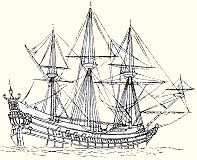
Recent email:
Subject: Mailing List
Date: 17 May 2008
Please add my new email address to your mailing list - I don't want to miss ANY of my Glen-L messages! I really LOVE your product line, your web site, and just reading everything you guys write . . .
When I was a kid (I am 43 now) I had a cherished Glen-L catalog that I probably picked up used at a garage sale and darn near wore it out flipping through the pages thinking (dreaming) of building one of your boats. I wonder how many others can say the same thing, lots probably.
Thank you for your assistance and keep the newsletters coming!
-- Paul Wescott
Buena Park, CA
Subject: Fathers' Day
Date: 13 June 2008
-- James Degges
Subject: Thank you
Date: 15 May 2008
I really enjoy receiving your email correspondence because I think that the people at Glen-L enjoy what they are doing.
I work for an old family business, (not my family or I'd be living on a boat) and appreciate that you keep the values alive.
Kindest regards,
-- Bob Burke
Subject: Glen-L
Date: 26 May 2008
I am a student at the Kings School Australia. I am 16 years old and am so excited about my Zip. I am building one of your boats for my major project for my HSC (High School Certificate).
I wanted to thank you for the opportunity to build such a fine boat. I also wanted to try to keep you informed on how my boat is going and send some photos of the boat. I also wanted to know how to do that???
Thank you again.
-- Charlie Boyce
Bowral, Australia
Editor's Note: As we've already informed Charlie, anyone can review the progress of other builders as well as post their own build updates on the Glen-L.com website by following the instructions at our Project Registry. All builders can also post pictures of their boats, from the very start of their build through completion and cruising the lakes or high seas of their choice at our Customer Photos area by following the instructions at How to Submit Photos.
Subject: Plugging Screw Heads
Date: 30 May 2008
You are right about cutting your own plugs. Don't buy a bag of bungs at West Marine - they were cut in Taiwan and are all dried out and won't fit your counterbores.
Bill Thomas
Marine City, Michigan
Subject:Restoration
Date: 2 June 2008
He even had many opportunities to sell it but always decided to keep it. Last summer I offered to store it at a friend's shop, where it is now. He is now 80 years old and without his knowledge I am restoring it. You can see pictures of it at http://www.ramblinrose.ca/thunderbolt/. I thought it would be a quick paint and float, but now have found the rot as you can see in the pictures. Wish me luck and I'll keep you posted. My intentions are to give the old boy a ride in his senior years now.
Also as a family history my uncle built one of the Thunderbolts back about the same time give or take a few years, but it has long since left the family, last seen in a field in Ontario somewhere. He has now gone on to supercats, working up through the ranks, he now owns a 55' MTI, http://www.ramblinrose.ca/mti/; a little out of my league.
I love our Glen-L Thunderbolt.
Pleasure sharing this with you and I hope you're interested in updates of the progress.
Cheers,
-- Randy Milligan
Oshawa, Ontario, Canada
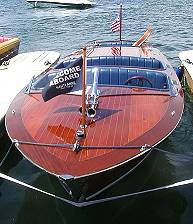
Subject: Lake Arrowhead Wooden Boat Show
Date: 9 June, 2008
Building Nautianne several years ago was one of the most challenging, rewarding, most fun things I have ever undertaken. I highly recommend this type of project for woodworkers with some experience (by experience, I mean being able to cut wood and fit pieces together.. ). That was my first attempt at building a boat. Thanks again,
-- Jim Kirkpatrick
Bakersfield, California
Subject: Business Comments
Date: 5 June 2008
I wanted to pass along my comments about your business, the WebLetter, and let you know that I think John is doing a fine job as Barry's replacement.
I have been admiring your designs for close on to half a century. I am delighted that such quality plans have endured and your family business has thrived to make them available to new generations of boat builders.
A few years ago I started getting your WebLetter. I firmly believe the WebLetter helps to bring your clients together to share their boat-building experiences. But more than that, it adds a personal touch that strengthens the bond between designer and builders. It also introduces potential builders to ideas, boat building tips and, of course, stories about boats that will help them get into boat building.
You have created a fine company. My best wishes and hopes that it will continue for generations to come.
-- Jerry Foster
San Jose, California
Subject: My First Glen-L Boat
Date: 11 June 2008
In 1971, I started the Bonanza as a 17 foot, canted-transom version. I installed a 327 Chevy v-8 and launched it in 1973. It was a great boat and my kids grew up with us using the heck out of it for many years.
After losing my wife to cancer in '04 I lost interest in just about everything, including the Bonanza. Last year I gave the boat to my grandson who is in the process of refinishing and repowering it. I helped him last summer with a lot of the work, and he says it will be ready in a month or so to put in the water. I find it hard to believe that this boat has lasted so many years, at last count 35, and will go on for many more. I would say this is some kind of tribute to your father's designs.
In closing, I want to let you know that I am now 72 years old and building your version of the Sea Knight, of which I have been in contact with you recently. I'm sorry to say this will probably be my last Glen-L boat (If I live long enough to finish it).
Thank you for the informative newsletters, keep them coming.
-- Walt Stafford
Littleton, Colorado
Subject: Eight Ball Stitch & Glue
Date: 25 June 2008
I already have the plans for the Cruisette and will begin on it later this fall. I will forward pics on it as the construction process moves along.
Thanks for the excellent plans and a very rewarding experience.
-- Steve Sage
Bland, Virginia
Subject: Console Skiff
Date: 14 June 2008
I am always looking for my next build, let's just say that I enjoy the journey from birth to creation, and I am a firm believer that boats, whether they be a sail boat or launch, all have a life and soul built into them. I enjoy the smell of wood and epoxy - not so much the paint, but also the smell of the sea, and the comradship that has developed with over 40 yrs of sailing and fishing.
To take a boat that you have built and given life to, becomes a part of your family, and when it is admired and talked about, so much the better!!
-- Les Wheeler
New Zealand
eMail of the Month
Subject: A Learning Experience
About 12 months ago I completed building the Glen-L 15. It has great lines
and is admired when I go out sailing. I did a so-so
job on the details but I will improve as I go. |
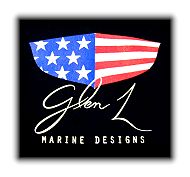
GLEN-L boats, of course





